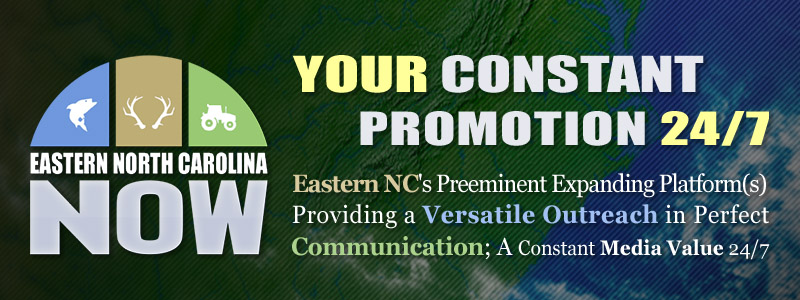REAL News for REAL People
Education Administrator Claims at Variance With Class-Size Research
Publisher's note: The author of this fine report is Kristy Bailey, who is a contributor to the Carolina Journal, John Hood Publisher.
Targeted reductions show more promise than large-scale programs
RALEIGH North Carolina Superintendent of Public Instruction June Atkinson is traveling across the Tar Heel State to educate voters about the relationship between smaller class sizes and improved student performance.
Atkinson's "Class Size Matters" tour, launched in late July, featured meetings with parents and educators in Elon, Winston-Salem, and Charlotte.
"North Carolina has reduced class sizes over the past decade, and I do not want us to lose ground by going back to a place where classes are larger, " Atkinson told Carolina Journal. "Safety is also a factor."
Conflicting research results
But studies conducted over the last 30 years show conflicting results. "State education officials advocate for smaller class sizes based largely on faith, not research," said Terry Stoops, director of research and education studies at the John Locke Foundation. "Targeted class size reduction in elementary school math and reading courses may benefit struggling students. As a statewide policy, however, the benefits do not justify the costs."
Meanwhile, other top state Democratic leaders, including outgoing Gov. Bev Perdue, continue pushing for more education funding. Perdue said North Carolina schools would receive $190 million less in the fiscal year that began July 1 than in the previous year and vetoed lawmakers' adjustment to the General Fund budget, calling for another $100 million in addition to the $242.4 million overall increase in state spending. More than $7.5 billion goes to the state K-12 public school system during the 2012-13 fiscal year.
"The net increase to the state's K-12 public school budget is only $62 million, and when accounting for the loss of $259 million in federal recovery funding next year, public schools will have to operate with $190 million less," analysts from the liberal N.C. Justice Center concluded in a July report.
Final personnel data from the N.C. Department of Public Instruction show a total loss of about 9,400 jobs -- 2,000 of them locally funded. The remaining 7,400 jobs had been funded with federal stimulus money. A Civitas Review analysis found that teaching positions accounted for approximately 19 percent of positions eliminated. Other job losses included: teacher assistants (2,042); service workers (1,051); and clerk/secretary (282).
The state was awarded $7.6 billion in stimulus money in 2009, with $2.6 billion earmarked for the K-12 public school system, according to data from the federal government.
After federal dollars ran out, state lawmakers had to pick up the tab if they wanted to keep personnel levels stable. The General Assembly increased state funding for education by $318 million. The shift resulted in an additional 4,613 state-funded education jobs. The Obama administration ended funding for the remaining 4,800 jobs.
Class size research
Atkinson pointed to what she termed "one of the most extensive research studies" for evidence of how class size affects student achievement. "The researchers concluded that smaller class sizes have positive effects on improving student learning, especially for boys and our most vulnerable children," she said.
The Tennessee Student Teacher Achievement Ratio Study, or Project STAR, tracked the kindergarten class of 1985, in which students were assigned to classes ranging between 15 and 22 students. Researchers found that students in the smaller classes outperformed their peers in larger ones, with black and lower-income students improving the most.
Even so, "[l]ongitudinal studies of Project STAR indicated that smaller classes improved student performance, but a number of implementation problems may have biased the results," Stoops wrote in an op-ed column. "For example, Project STAR likely suffered from the 'Hawthorne Effect,' a serious form of bias whereby participants change their behavior (in this instance, students working harder) because they are aware that they are the subjects of a study."
Atkinson said additional research from 2001, 2003, 2008, and 2009 "have reached similar conclusions -- there is a positive correlation between smaller class sizes and student achievement. A recent study about charter school class size reported that class size did not have an impact on student achievement; however, the study stated that an important factor in improving student achievement was frequent feedback from a teacher. As a former teacher, I know that you cannot give frequent feedback to each student with 35 students in a class."
"Research shows that most teachers do not change their instructional approaches after class sizes are lowered," Stoops countered. "In other words, the promise of 'individualized attention' seldom materializes in the classroom. Estimates of the cost of lowering class sizes vary. One study suggests that a two-student reduction in average class size would require a permanent 10 percent increase in per-student expenditures. In most cases, two fewer students will have no significant effect on student achievement."
Stuck on size
The General Fund budget allotment for K-12 public education includes $124 million, spread over the current budget year and the next, to hire 3,324 K-3 teachers in an effort to reduce class size ratios in those grades. According to Civitas, classroom ratios for those grades would be reduced from 18 students per teacher to 17.
But in a May 29 report, DPI puts some current ratios at 1:33. "Many have asked how class sizes could be this large since lawmakers and others refer to teacher-to-student ratios that are 1:17 or 1:18 in grades K-3," DPI officials said in the report. By law, class sizes in grades K-3 shouldn't exceed 24 students, but that requirement has been waived in grades 4-12 over the past several years to help school districts deal with budget cuts, DPI reports. The teacher allotment ratios are used to determine how much money is sent to individual school districts to hire new teachers as the student population grows.
The National Center for Education Statistics put the average elementary class size in North Carolina at 19 students and the average secondary class size at 21 students, according to the John Locke Foundation's Agenda 2012. During their 2011 session, state lawmakers put mandates in place requiring all public schools to have a districtwide average of 21 students and a maximum of 24 students per class.
Atkinson's goal is clear. "I want teachers and principals to group and regroup students, especially at the elementary and middle school level, to have smaller groups when students have more challenges," she said.
Go Back
Targeted reductions show more promise than large-scale programs
RALEIGH North Carolina Superintendent of Public Instruction June Atkinson is traveling across the Tar Heel State to educate voters about the relationship between smaller class sizes and improved student performance.
Atkinson's "Class Size Matters" tour, launched in late July, featured meetings with parents and educators in Elon, Winston-Salem, and Charlotte.
"North Carolina has reduced class sizes over the past decade, and I do not want us to lose ground by going back to a place where classes are larger, " Atkinson told Carolina Journal. "Safety is also a factor."
Conflicting research results
But studies conducted over the last 30 years show conflicting results. "State education officials advocate for smaller class sizes based largely on faith, not research," said Terry Stoops, director of research and education studies at the John Locke Foundation. "Targeted class size reduction in elementary school math and reading courses may benefit struggling students. As a statewide policy, however, the benefits do not justify the costs."
Meanwhile, other top state Democratic leaders, including outgoing Gov. Bev Perdue, continue pushing for more education funding. Perdue said North Carolina schools would receive $190 million less in the fiscal year that began July 1 than in the previous year and vetoed lawmakers' adjustment to the General Fund budget, calling for another $100 million in addition to the $242.4 million overall increase in state spending. More than $7.5 billion goes to the state K-12 public school system during the 2012-13 fiscal year.
"The net increase to the state's K-12 public school budget is only $62 million, and when accounting for the loss of $259 million in federal recovery funding next year, public schools will have to operate with $190 million less," analysts from the liberal N.C. Justice Center concluded in a July report.
Final personnel data from the N.C. Department of Public Instruction show a total loss of about 9,400 jobs -- 2,000 of them locally funded. The remaining 7,400 jobs had been funded with federal stimulus money. A Civitas Review analysis found that teaching positions accounted for approximately 19 percent of positions eliminated. Other job losses included: teacher assistants (2,042); service workers (1,051); and clerk/secretary (282).
The state was awarded $7.6 billion in stimulus money in 2009, with $2.6 billion earmarked for the K-12 public school system, according to data from the federal government.
After federal dollars ran out, state lawmakers had to pick up the tab if they wanted to keep personnel levels stable. The General Assembly increased state funding for education by $318 million. The shift resulted in an additional 4,613 state-funded education jobs. The Obama administration ended funding for the remaining 4,800 jobs.
Class size research
Atkinson pointed to what she termed "one of the most extensive research studies" for evidence of how class size affects student achievement. "The researchers concluded that smaller class sizes have positive effects on improving student learning, especially for boys and our most vulnerable children," she said.
The Tennessee Student Teacher Achievement Ratio Study, or Project STAR, tracked the kindergarten class of 1985, in which students were assigned to classes ranging between 15 and 22 students. Researchers found that students in the smaller classes outperformed their peers in larger ones, with black and lower-income students improving the most.
Even so, "[l]ongitudinal studies of Project STAR indicated that smaller classes improved student performance, but a number of implementation problems may have biased the results," Stoops wrote in an op-ed column. "For example, Project STAR likely suffered from the 'Hawthorne Effect,' a serious form of bias whereby participants change their behavior (in this instance, students working harder) because they are aware that they are the subjects of a study."
Atkinson said additional research from 2001, 2003, 2008, and 2009 "have reached similar conclusions -- there is a positive correlation between smaller class sizes and student achievement. A recent study about charter school class size reported that class size did not have an impact on student achievement; however, the study stated that an important factor in improving student achievement was frequent feedback from a teacher. As a former teacher, I know that you cannot give frequent feedback to each student with 35 students in a class."
"Research shows that most teachers do not change their instructional approaches after class sizes are lowered," Stoops countered. "In other words, the promise of 'individualized attention' seldom materializes in the classroom. Estimates of the cost of lowering class sizes vary. One study suggests that a two-student reduction in average class size would require a permanent 10 percent increase in per-student expenditures. In most cases, two fewer students will have no significant effect on student achievement."
Stuck on size
The General Fund budget allotment for K-12 public education includes $124 million, spread over the current budget year and the next, to hire 3,324 K-3 teachers in an effort to reduce class size ratios in those grades. According to Civitas, classroom ratios for those grades would be reduced from 18 students per teacher to 17.
But in a May 29 report, DPI puts some current ratios at 1:33. "Many have asked how class sizes could be this large since lawmakers and others refer to teacher-to-student ratios that are 1:17 or 1:18 in grades K-3," DPI officials said in the report. By law, class sizes in grades K-3 shouldn't exceed 24 students, but that requirement has been waived in grades 4-12 over the past several years to help school districts deal with budget cuts, DPI reports. The teacher allotment ratios are used to determine how much money is sent to individual school districts to hire new teachers as the student population grows.
The National Center for Education Statistics put the average elementary class size in North Carolina at 19 students and the average secondary class size at 21 students, according to the John Locke Foundation's Agenda 2012. During their 2011 session, state lawmakers put mandates in place requiring all public schools to have a districtwide average of 21 students and a maximum of 24 students per class.
Atkinson's goal is clear. "I want teachers and principals to group and regroup students, especially at the elementary and middle school level, to have smaller groups when students have more challenges," she said.
| July 2012 Poll Results | John Locke Foundation Guest Editorial, Editorials, Op-Ed & Politics | We No Longer See This 800 Pound Gorilla |





















